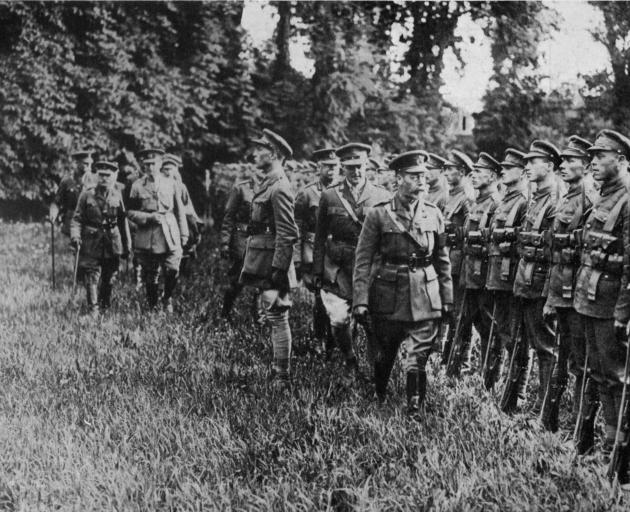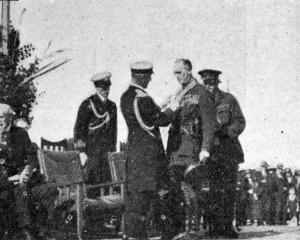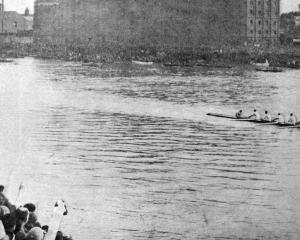
The New Zealanders were just westward of the fortifications. A division on the right was held up by machine-guns in the chapel, until five tanks reduced them. Bombardments against the garrison failed to dislodge them. The New Zealanders tried to take Le Quesnoy by a frontal attack, and reached the outer ramparts, but were held up by machine-guns.
The old fortifications were full of Germans. Further advance by that method was impossible, so the New Zealanders worked northward and southward, picketed the town, and went ahead towards Herbigries and Jolsmetz.
There was a formidable German artillery line, and many batteries being grouped under cover of buildings and hedges, and they were firing furiously in order to protect Le Quesnoy.
Before any could be withdrawn the New Zealanders were swarming among the guns, demanding surrender.
Without stopping to count their trophies, the New Zealanders rushed the wagon lines, cutting off the transport which was on the point of galloping away.
The Le Quesnoy garrison was first aware of the catastrophe when the protective barrage suddenly ceased, leaving them perplexed, but defiant. A British aeroplane flew overhead and dropped a message demanding surrender; the only answer was another outbreak of machine-gun fire.
The New Zealand commander, after an interval sent in two parties, each with a German officer, pointing out the futility of further bloodshed; but the garrison's commander sternly declined to surrender. The New Zealanders, late in the afternoon, attacked again, pushed through the ramparts, wiped out the machine-guns, and penetrated the streets.
They were obliged to fight their way from barricade to barricade before the remains of the garrison threw down their arms. Over a thousand prisoners were collected from cellars and improvised hiding places.
The capture of Le Quesnoy will be remembered as one of the most thrilling episodes in this campaign. It is believed to be the first time that a besieged town has been formally summoned to submit by British troops.
Flu affects court sittings
In consequence of the spread of the epidemic affecting the police force, gaol officials, and prison authorities in Auckland, it has been decided to postpone the criminal sittings of the Supreme Court for one month from Monday next.
There is no sign of the epidemic abating. The death toll is slightly over 70.
All the military camps have been visited by influenza. Two deaths are reported, one at Featherston and the other at Trentham. At Featherston 299 are in hospital. At Trentham, the total with influenza in hospital is 148.
Victory rumours
The rumours that have been in circulation regarding the capitulation of Germany were mentioned in the House of Representatives on Wednesday afternoon by Sir John Findlay (Hawke's Bay), who asked if the Prime Minister would give an assurance that any news received would be made public immediately.
The Prime Minister assured members, that when the news of the Germans' capitulation came to hand it would be published at the earliest possible moment. Not a word on the subject had come through yet.
- ODT, 8.11.1918.
COPIES OF PICTURE AVAILABLE FROM ODT FRONT OFFICE, LOWER STUART ST, OR WWW.OTAGOIMAGES.CO.NZ












